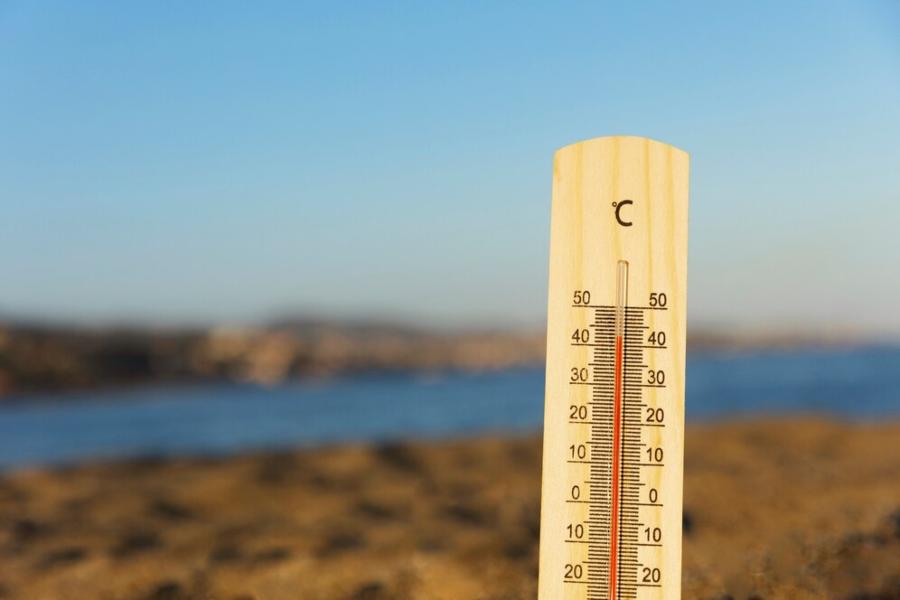What is the average temperature of the water near Los Angeles? This is a common question for locals, tourists, and ocean lovers alike. Whether you’re planning a beach vacation, a surf trip, or simply curious about California’s coastal climate, knowing the average ocean temperature can help shape your plans and expectations.
Southern California’s coastline is influenced by a mix of seasonal shifts, upwelling patterns, and offshore currents. This combination creates cooler ocean water than many anticipate—especially for a city known for its year-round sunshine. While the beaches may look tropical, the water often tells a different story.
In this comprehensive guide, we’ll break down what the average temperature of the water near Los Angeles is. From seasonal fluctuations and monthly variations to the impact on beachgoers and marine life, we’ll explore every angle. You’ll also find answers to commonly asked questions and gain a deeper understanding of why the Pacific Ocean here behaves the way it does.
What is the average temperature of the water near los angeles?
Typically, it ranges from 58°F in winter to 68°F in late summer, with fluctuations due to currents and season.
Los Angeles Ocean Water Temperature: What to Expect Year-Round
The average temperature of the water near Los Angeles typically ranges between 58°F (14°C) in the winter and 68°F (20°C) in the late summer months. This variation is influenced by the California Current, a cold-water current that flows southward along the Pacific Coast. Although the sunny skies of Los Angeles suggest tropical beach weather, the ocean remains surprisingly cool year-round. Even during the warmest months, swimmers often find the water brisk and invigorating.
Water temperatures tend to reach their peak in August and early September, while the coldest readings usually occur between January and March. In the spring, the water gradually begins to warm, while fall brings a slow decline in ocean temperatures. Beaches like Venice, Malibu, and Santa Monica share similar temperature ranges, though minor variations can occur based on depth, tides, and offshore currents.
Despite these cooler conditions, the Los Angeles coastline is a popular destination year-round. Surfers and swimmers commonly wear wetsuits for added warmth, especially in the off-season. Additionally, marine species such as seals, sea lions, and dolphins thrive in this cooler ecosystem. Understanding what is the average temperature of the water near Los Angeles can help you better prepare for coastal activities and appreciate the region’s unique oceanic climate.
When Is the Water Warmest Near Los Angeles?
Peak Months for Ocean Warmth
The ocean water near Los Angeles reaches its warmest levels between late July and early September. During this time, temperatures typically hover between 66°F and 68°F. In particularly shallow areas or during prolonged heatwaves, water temperatures can briefly climb to 70°F, offering some of the most comfortable swimming conditions of the year.
The Role of Summer Climate Conditions
Summer contributes to ocean warmth through extended daylight, stronger solar intensity, and reduced wind activity. These elements allow the ocean’s surface to absorb and retain heat more efficiently. Additionally, with less wind, there is reduced upwelling of cold water from the ocean depths, helping to maintain higher average surface temperatures.
Warmest Beaches Along the LA Coast
While most beaches along the Los Angeles coast experience similar ocean temperatures, Santa Monica and Venice Beach often feel slightly warmer. Their shallower coastal zones and urban heat retention help elevate water temperatures just enough to be noticeable, making them popular destinations for summer swimming.
The Effect of Seasonal Lag
Even after summer officially ends, water temperatures tend to stay warm into early fall. This delayed cooling, known as seasonal lag, occurs because the ocean retains heat longer than the surrounding air. As a result, swimmers and surfers often enjoy mild water conditions into September and early October, extending the beach-going season beyond the peak summer months.
Why Is the Water Colder Than Expected in Los Angeles?
Despite its sunny reputation, Los Angeles often surprises beachgoers with colder-than-expected ocean temperatures. Several key environmental and oceanographic factors contribute to this cooling effect along the Southern California coast. Below are the main reasons the water near Los Angeles feels brisk—even during hot summer days:
- California Current: A cold-water current known as the California Current flows southward from Alaska along the Pacific Coast. This steady movement of chilly ocean water significantly lowers surface temperatures along Southern California’s shores.
- Coastal Upwelling: During certain seasons, particularly spring and early summer, offshore winds push warmer surface water away from the coast. This movement causes colder, nutrient-rich water from the ocean depths to rise, reducing the overall water temperature at the surface.
- Ocean Depth and Drop-offs: Some coastal areas around Los Angeles have steep underwater drop-offs, which allow colder, deeper water to mix quickly with surface layers. This vertical mixing keeps the water temperature from rising too much, even on warm days.
- Air Temperature vs. Water Temperature: Just because the air is warm doesn’t mean the water will match. On foggy or overcast mornings, the contrast between the warm air and cold water becomes even more noticeable.
- Nighttime Cooling: Once the sun sets, ocean water cools rapidly without its radiant heat. This is especially common in early spring, leading to colder morning swim conditions.
What Is the Monthly Average Ocean Temperature Near Los Angeles?
The average temperature of the ocean near Los Angeles shifts gradually throughout the year, reflecting seasonal weather patterns, ocean currents, and atmospheric changes. These monthly averages provide a reliable guide for swimmers, surfers, and coastal planners to understand what to expect when visiting the area’s beaches.
- January – 58°F (14°C): The coldest part of the year begins with brisk water temperatures, often requiring wetsuits for water activities.
- February – 58°F (14°C): Temperatures remain consistent, still reflecting the chill of winter. Offshore winds may enhance upwelling, keeping the water cold.
- March – 59°F (15°C): Slight warming begins as the season shifts toward spring, though it’s still quite chilly for most swimmers.
- April – 60°F (15.5°C): A noticeable, but modest, rise in temperature occurs as the days get longer and more sunlight hits the surface.
- May – 61°F (16°C): Warmer weather continues the trend, though water still feels cool without thermal protection.
- June – 63°F (17°C): Early summer brings increasing warmth, though upwelling may still keep water temperatures in check.
- July – 66°F (19°C): One of the warmest months for ocean water, offering more comfortable swimming and surfing conditions.
- August – 68°F (20°C): Peak ocean temperature for the year. Shallow bays may even reach 70°F under ideal conditions.
- September – 67°F (19.5°C): Temperatures begin to cool slightly but remain very swim-friendly, thanks to seasonal lag.
- October – 65°F (18.5°C): A gentle decline continues, but warm days may still make for pleasant beach outings.
- November – 62°F (16.5°C): Fall brings a more noticeable drop as ocean heat dissipates and wind conditions shift.
- December – 59°F (15°C): Cooler temperatures return, completing the yearly cycle with winter conditions setting in.
How Does Ocean Temperature Affect Activities Near Los Angeles?
Surfing and Wetsuit Usage
Ocean temperature plays a major role in surfing culture across Los Angeles. Since the water generally remains below 68°F for much of the year, most surfers wear wetsuits to stay warm. The standard 3/2mm wetsuit is commonly used year-round, offering a good balance of insulation and flexibility for varying conditions.
Swimming Comfort in Changing Seasons
Comfortable swimming without a wetsuit is typically limited to the warmest months—late July through September—when ocean temperatures hover between 66°F and 68°F. Outside of this seasonal window, the water may feel too cold for extended swims, especially for visitors not accustomed to colder sea conditions.
Marine Life Behavior and Sightings
Cool ocean temperatures support the presence of species like seals, sea lions, and various types of cold-water fish. When temperatures fluctuate, it can influence migration patterns and biodiversity. Warmer years might result in sightings of species that usually inhabit more tropical waters.
Impact on Boating and Kayaking
Water temperature also influences ocean conditions such as fog density, wind patterns, and swell height. These elements can affect the safety and planning of boating, kayaking, and paddleboarding activities, especially during cooler or transitional months.
Beach Tourism and Planning
Understanding the average temperature of the water near Los Angeles helps tourists plan better. It affects what to wear, whether to bring wetsuits, and which activities are most enjoyable based on the current ocean conditions.
Final Remarks
The average temperature of the water near Los Angeles hovers between 58°F in winter and 68°F in summer. Though it may seem cool compared to tropical destinations, these temperatures define the unique character of Southern California’s coastline.
Whether you’re a surfer, a swimmer, or simply a beach enthusiast, knowing what to expect from the water temperature can help you better plan your activities and enjoy your time on the Pacific. The rhythm of the ocean, influenced by nature and climate, is part of what makes LA’s beaches both refreshing and iconic.
FAQ’s
Q. Is the water ever warm enough to swim without a wetsuit in LA?
A. Yes, usually from July to September. Water temperatures can reach 68°F to 70°F during this time, making it comfortable for short swims.
Q. Why is the ocean water cold in Los Angeles, even in summer?
A. The California Current and coastal upwelling bring cold water from deeper parts of the Pacific, which keeps surface temperatures lower.
Q. What’s the best time of year to visit Los Angeles for warm water?
A. Late August and early September generally offer the warmest ocean temperatures and the best conditions for swimming.
Q. Do all LA beaches have the same water temperature?
A. Temperatures are similar but can vary slightly. Santa Monica and Venice may feel warmer due to shallow waters and urban warmth.
Q. How does El Niño or La Niña affect water temperatures?
A. El Niño years often bring warmer ocean temperatures, while La Niña tends to enhance upwelling and result in cooler water near the coast.





Leave a Reply